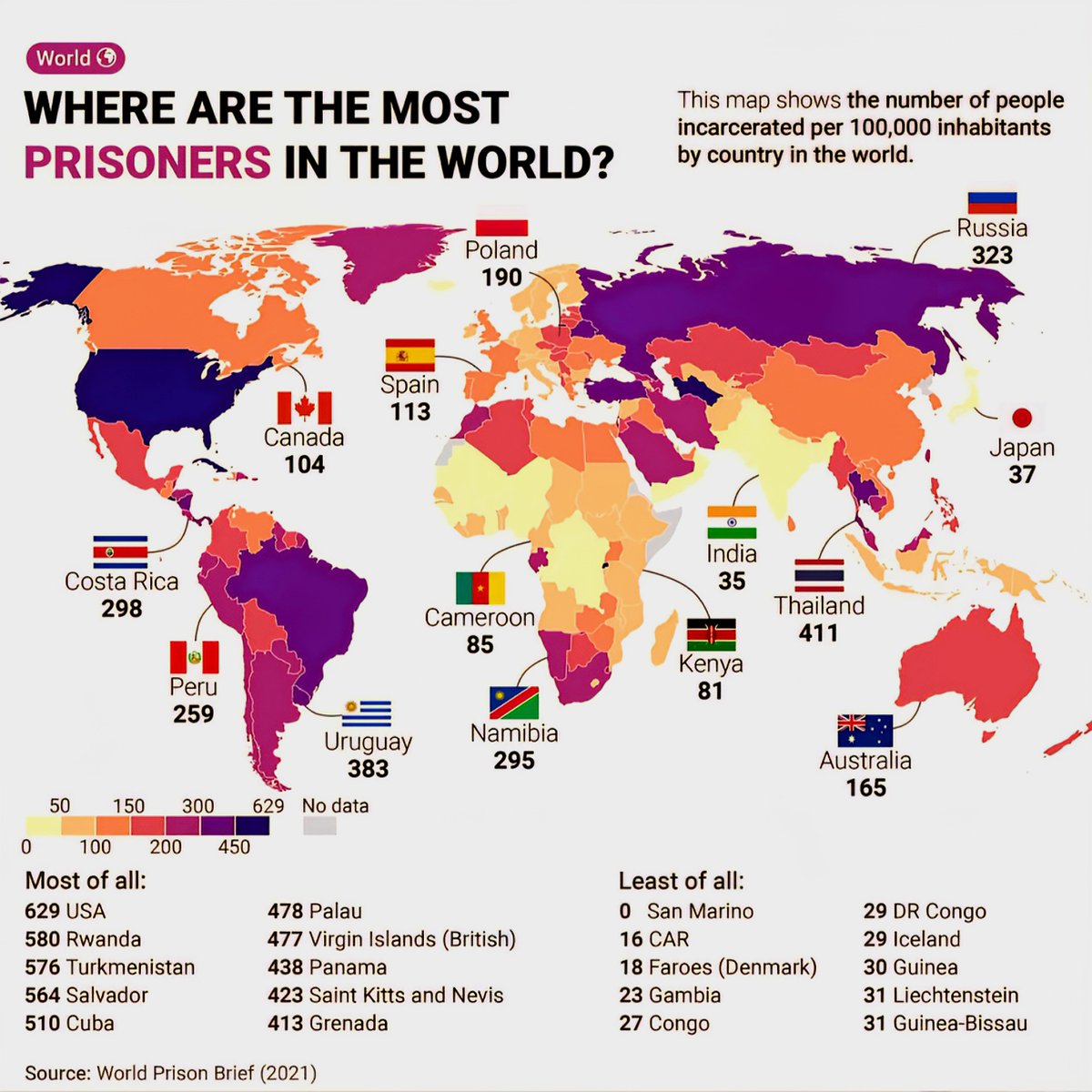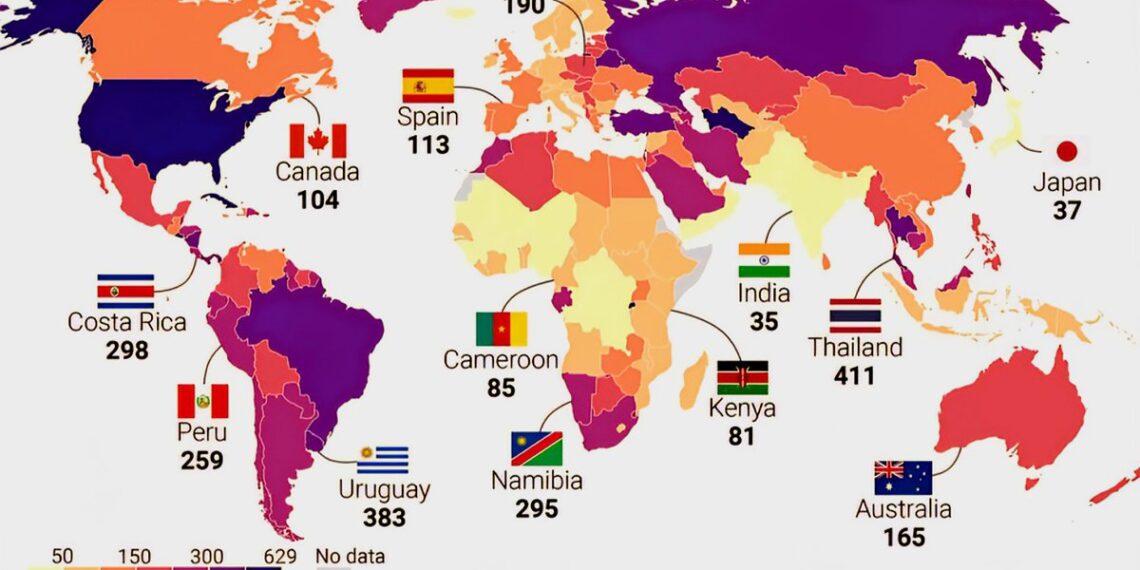Select Language:
Visualize the Global Prison Landscape in 2025

1. The United States: Leading the World in Prison Population
The United States continues to hold the dubious distinction as the country with the highest incarceration rate globally. Despite decades-long reforms and reopening debates over prison privatization, the U.S. prison population remains elevated, hovering around 2.3 million inmates in 2025. Factors such as mandatory minimum sentences, drug-related offenses, and racial disparities contribute heavily to this figure. States like California and Texas remain hotspots, but initiatives aimed at reducing mass incarceration are gradually gaining ground, promising a future where the prison population might stabilize or decline.
2. China: The Enigma of Data and a Growing Deterrent
While exact figures are hard to verify due to opaque government data, estimates suggest China incarcerates between 1.7 to 2 million individuals. The country’s legal system heavily emphasizes control and security, often with strict policies against political dissent. Recent years have seen an increase in detention centers, especially in regions like Xinjiang and Tibet, sparking international concern over human rights practices. Despite limited transparency, China continues to expand its criminal justice infrastructure, reflecting an emphasis on state stability and governance.
3. Russia: Rising Trends in Imprisonment
Russia’s incarceration rates have surged in recent years, with estimates surpassing 600,000 inmates. The government’s focus on tough-on-crime policies and political crackdowns have contributed to this rise. Notably, political activists and dissidents face significant imprisonment, often under charges that international observers consider politically motivated. Reform efforts are sporadic, and overcrowded prisons remain a major issue across the vast nation, emphasizing a need for systemic change.
4. India: The Second Largest Prison System Globally
India’s prison population exceeds 480,000, marking it as the second-largest globally after the United States. Overcrowding remains a pressing concern, with many facilities operating beyond their intended capacity. Challenges such as slow judicial processes, delays in trial proceedings, and a large number of undertrial prisoners exacerbate the crisis. The Indian government has initiated reforms aimed at decriminalizing minor offenses and improving legal infrastructure, but progress is slow and uneven across regions.
5. Brazil: Navigating Crime and Overcrowding
Brazil’s incarceration figures have climbed sharply, with estimates around 750,000 inmates. The country struggles with high crime rates, especially in urban centers, which fuel the prison population. Overcrowded prisons often lead to violence and deteriorating conditions, drawing criticism from human rights organizations. Recent policies focus on alternative sentencing, community service, and prison reforms to alleviate congestion and improve inmates’ treatment.
6. South Africa: Facing Socioeconomic Challenges
South Africa’s prison system houses approximately 160,000 inmates. Socioeconomic issues, high crime rates, and systemic inequalities play a significant role in its incarceration levels. The country is also grappling with rehabilitation and reintegration challenges, as many inmates face barriers re-entering society. Efforts are underway to implement restorative justice programs and reduce repeat offenses through community-based initiatives.
7. European Countries: Progress Toward Decarceration
Many European nations, such as Norway, Germany, and the Netherlands, display a stark contrast to the high incarceration models elsewhere. Their prison populations are significantly lower, and emphasis is placed on rehabilitation and humane treatment. Norway, for example, maintains a prison population of just over 3,000, focusing on providing inmates with opportunities for education and mental health support. Progressive policies and a focus on restorative justice demonstrate a shift toward a more humane criminal justice approach.
8. Countries with Minimal Prison Systems: Focus on Alternatives
Several nations, including Scandinavian countries and some Pacific Island states, have minimized their reliance on incarceration by adopting innovative alternatives such as community service, probation, and restorative justice programs. Finland’s well-known rehabilitation model exemplifies this trend, with a focus on reducing recidivism and supporting offenders’ social reintegration. These approaches are gaining recognition worldwide as effective strategies for balancing safety with human rights.
9. Emerging Trends and Future Outlook in 2025
The global prison landscape is evolving with technological innovations and policy shifts. Countries are exploring digital monitoring, AI-based risk assessments, and increased use of non-custodial sentences to manage their inmate populations better. International cooperation and human rights pressures are also encouraging nations to reform outdated penal systems. As awareness about mental health and social factors influencing crime grows, the future of incarceration may see a shift toward more preventive and rehabilitative models.
The global prison map of 2025 underscores disparities but also highlights promising reforms and innovative approaches. From high incarceration rates in the U.S. and China to progressive decarceration efforts in Scandinavia, the world is at a crossroads, choosing pathways toward justice, human dignity, and effective crime prevention.






